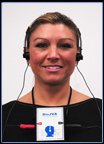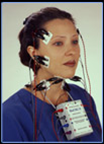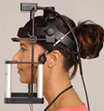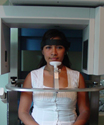
Human joints have surfaces which rub together in function. Smooth, well lubricated surfaces in a proper biomechanical relationship produce little friction and little vibration. But surface changes, such as those caused by degeneration, tears, or displacements of the disk, generally produce friction and vibration. Different disorders can produce different vibration patterns or signatures. PC-assisted vibration analysis helps identify these patterns and helps distinguish among various TMJ disorders.

Surface EMG is the worldwide standard method for recording muscle-specific activity in skeletal muscles. It has been proven reliable in numerous studies over many years and is a clinical procedure that can easily be performed.

The all-new JT-3D records incisor-point movements in three dimensions. A small magnet, attached to the labial surfaces of the mandibular incisors, is tracked by an array of sensors to produce vertical, antero-posterior and lateral components of movement. It mounts simply, yet securely on the head, and provides an incredibly stable base for the sensors. This provides spectacular resolution even on the smallest of mandibular movements.

The T-Scan provides you with the comprehensive information you need at the beginning of treatment, allowing you to plan an appropriate course of action early on. This helps reduce the number of repeat visits needed to perfect occlusion. It also cuts down the amount of time needed with patients during office visits.

I-CAT provides high definition, digital imaging at reduced cost with less radiation to the patient with a typical scan time of only 20 seconds. The I-CAT computer software delivers quick and easy reconstruction of critical anatomical information typically under one minute.